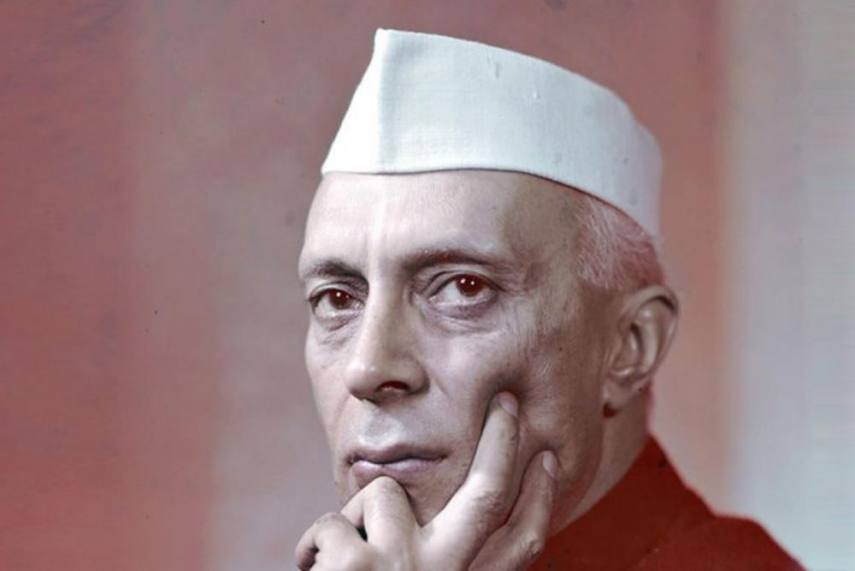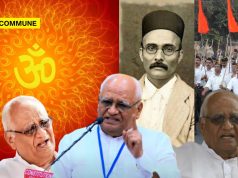
The Arya Samaj was a Hindu Reformist Movement or a sect carved out of the Hindu Fold taking birth on 10th April, 1875 founded by Shri. Dayanand Saraswati. During the early 1920s, the leader of the sect Swami Shradhanand was engaged in re-conversion (“Shuddhi” as they called it) of Muslims through the organisation he founded by the name “Bhartiya Hindu Shuddhi Mahasabha”. It is believed that the organisation managed to convert 7,815 erstwhile Muslims back to the Hindu fold simply by means of debate and deliberation.
The conversion activities caused a lot of tension between the two communities leading to a chain of events, primary of which was the assassination of Swamy Shradhanand on December 23, 1926. But apart from this, the immediate reaction to the mass conversion of the Muslims was that of highly defamatory pamphlets of Goddess Sita being distributed among the masses that questioned her fidelity and integrity.
The slanderous contents of the pamphlets triggered the Arya Samaj to come out with a book named “Rangila Rasul” in the year 1927, which was believed to have depicted the Islamic Prophet in bad light. This triggered the arrest of the publisher of the book, Mahashe Rajpal in 1927. Rajpal was later acquitted by the court due to the absence of a law against insult of religion.
Following the case, under intense duress from the Muslim community, the colonial regime was forced to pass a legislation in the form of Section 295(A), coloquially called the “Blasphemy law” that goes as follows:
“ Whoever, with deliberate and malicious intention of outraging the religious feelings of any class of citizens of India, by words, either spoken or written, or by signs or by visible representations or otherwise, insults or attempts to insult the religion or the religious beliefs of that class, shall be punished with imprisonment of either description for a term which may extend to three years, or with fine, or with both.”
For the first time in the history of the nation, the postulation of “blasphemy” which was alien to the land in social, civilizational, and jurisprudential parameters was introduced. Also, this marked the beginning of an era of what we know today as blatant “minority appeasement”
Despite the introduction of the new law, the violence and obstructionism from one side alone ceased to come to a halt.
On 6th April, 1929, Mahashe Rajpal was stabbed to death in cold blood by a 19 year old carpenter, Ilm-Ud-Din in a marketplace in Lahore. Later that year, the perpetrator was sentenced to the death.
It is to be noted that close to 6,00,000 people had attended the funeral procession of Ilm-Ud-Din and he was put to his grave by the National Poet of Pakistan, Allama Iqbal. To this date, Ilm-Ud-Din is celebrated as a national hero in the Islamic Republic of Pakistan and mass gatherings and events take place on the day of his hanging.
Post-independence, Pakistan adopted the Section 295(A) of the Indian Penal Code as such and also strengthened the Blasphemy Laws with the introduction of 295(B) and 295(C) which are as follows:
Section 295(B):
“Whoever willfully damages, desecrates or defiles the Holy Quran, or uses it in a derogatory manner for any unlawful purposes shall face imprisonment for life.”
Section 295(C):
“Whoever by words, either spoken or written, or by visible representation or by any imputation, innuendo, or insinuation, directly or indirectly, defiles the sacred name of the Holy Prophet Muhammad (peace be upon him) shall be punished with death, or imprisonment for life, and shall also be liable to fine.”
What was the case with India with regards to blasphemy laws post-independence? Well, it remained the same. But there was room for easy abrogation of Section 295(A) until the coming of the First Amendment to the Indian Constitution in 1951. Until 1951, Article 19(1)(A) promised absolute right to free speech for all citizens of India. Therefore, due to the presence of an absolute right to free speech, Article 295(A) would have had no teeth to it thus making it vulnerable enough to repeal.
But ill-fatedly, through the First Amendment came the Article 19(2) which gave the State the right to restrict the free speech in the interest of “public order, decency or morality or in relation to contempt of court, defamation or incitement to an offence”.
But what triggered this amendment between the years from 1947 to 1951 is something that is worth looking into.
Crossroads, a magazine which was headed by a gentleman named Romesh Thapar was a portal which in those days was extremely critical of Nehru’s economic and political policies. The magazine is believed to have made enough noise to worry the then Prime Minister Nehru himself because of its contents.
In 1950, when the magazine wanted to move its base of operations permanently to the Madras Presidency, the government of the day blocked such a move by means of “Maintenance of Public Order Act, 1949”, a legislation that gave the government to prevent the magazine from entering the region under the pretext of “public order”
Romesh Thapar decided to take the matter to the courts appealing against the government’s move, which eventually went on to become the landmark judgement of “Romesh Thapar vs State of Madras”
It was held by the Madras High Court that the magazine had complete and absolute freedom of expression under Article 19(1)(A) and hence curtailing its general mode of operation is a violation of its rights under the provisions of free speech. The Court also struck down the Maintenance of Public Order Act, 1949 in the case.
This judgement, immediately was followed by the Prime Minister with the correspondence of the Cabinet moving a draft bill in the floor of the Parliament to bring in “reasonable restrictions” to free speech, which was quite telling of the fears and insecurities of the then government and Prime Minister of the day, by whom the champions of free speech and dissent swear today, with regards to increased rights in the hands of the citizens to criticise the government.
It is to be noted that the only voice of opposition for this proposal by the government came from that of Shyama Prasad Mukherjee and the Hindu Mahasabha.
Shyama Prasad questioned the state’s right to place arbitrary restrictions on free speech.
But nevertheless, the First Amendment was passed successfully in 1951 thus introducing Article 19(2) among other things thus successfully curtailing the citizens’ absolute right to free speech.
The events leading up to the First Amendment establish abuse of power, circumvention of landmark judgements and fear of empowered citizens on the part of the erstwhile government.
The First Amendment also puts an end to the prospects of repealing Section 295(A) of the IPC and hence explains its existence to this date.
It is important for us to look at the historical background of Section 295(A) to understand the overt appeasement politics behind it and how it was the result of a legislation formulated by an oppressive colonial regime under pressure from an aggressive mob.




